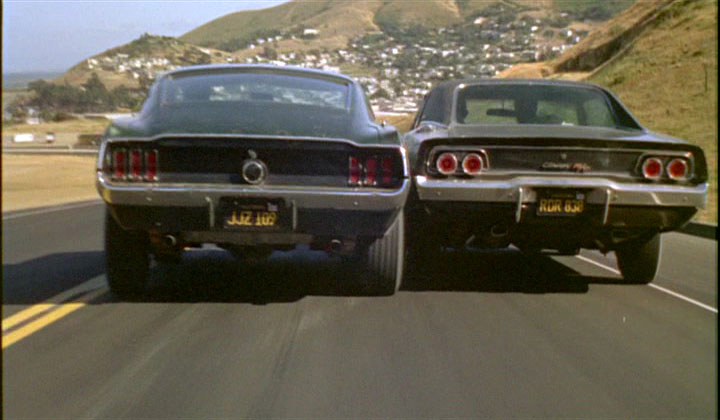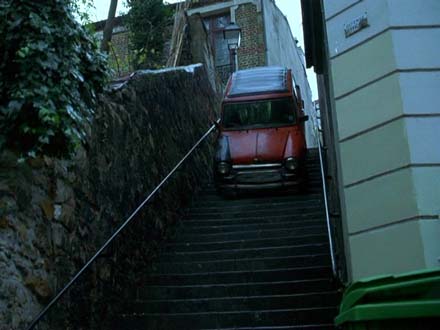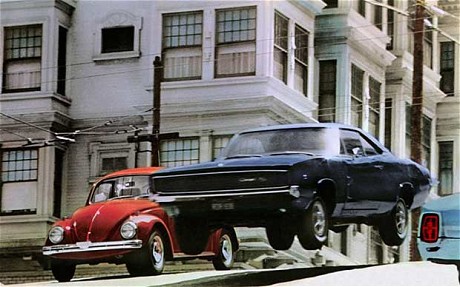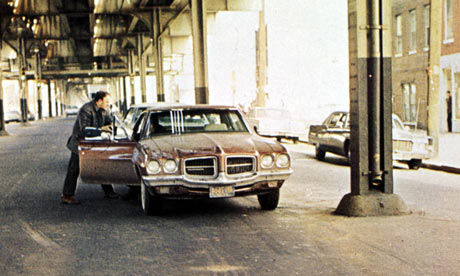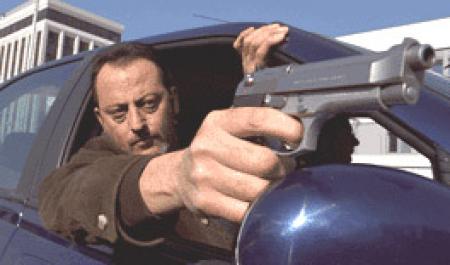Throughout this week, The Activity People have been counting down their Top 5 Movie Car Chases via our Facebook page. We’ve chosen the ones that make us want to get behind the wheel and burn some rubber just like our cinematic heroes.
It was a tough decision to make, because there’re just so many great scenes to choose from, and plenty of epic, big screen wheel-spinners missed out all together.
There was no place on the list for the awesome Vanishing Point or Smokey and The Bandit. In The Bourne Supremacy, Matty Damon manages a riveting chase, despite crashing his car around fifty times, and it still didn’t make the list. They made two whole movies full of gas guzzling, car smashing action and called them both Gone In 60 Seconds, but neither could accelerate into our Top 5; nor could any of the brilliant Fast and Furious franchise.
The movies which race onto our Top 5 list are there because we think they embody all of the reasons that everybody loves a good car chase: the thunderous engine noise, the screaming tyres, the shiny bodies zipping through impressive locations and, of course, the trail of destruction they leave in their wake. And these cars are responsible for plenty of silver screen carnage.
So sit back, strap yourself in, and enjoy The Activity People’s Top 5 Movie Car Chases. Is your favourite on the list?
5. The Blues Brothers
Jake and Elwood Blues are on a mission from God (apparently), and they’re not going to let anything stand in their way…not even a crowded shopping mall.
At the time of release, this movie held the record for most cars crashed. A total of 12 ‘Bluesmobiles’ were used throughout the film, including one built especially to fall apart.
To view the scene click here.
4. The Bourne Identity
His Supremacy chase didn’t make the list, but a chase from this equally great movie did. The Italian Job might be a little more famous for hurtling through a grand European city in a Mini Cooper, but the live action driving in this flick really puts the beloved little car to the test.
The release of the film had to be rescheduled, after director Doug Liman ordered a series of re-shoots, including this riveting chase. We’re certainly glad he did.
To view the scene click here.
3. Bullitt
The undisputed Daddy of the car chase and a title usually preceded by a Number 1 in lists of this nature, this exciting Steve McQueen vehicle only reached Number 3 in our list, but the iconic San Francisco streets and the unmistakable muscle car rumble will ensure that this movie lives forever in the annals of cinema history.
Director Peter Yates called for the chase to be shot at speeds of 75-80mph but the cars used managed insane speeds of over 110mph. Filming of the chase scene took more than three weeks and resulted in less than ten minutes of footage. But it’s great footage, indeed.
Two Ford Mustangs and Two Dodge Chargers were used to shoot the chase scene. All were expertly modified for high-speed chasing. Both Chargers were junked after filming along with one of the Mustangs. McQueen attempted to purchase the remaining Ford many years later but the private owner refused to sell and to this day the car sits, un-driven, in a barn.
To view the scene click here.
2. The French Connection
Another all time classic at Number 2. This time it’s Gene Hackman’s iconic portrayal of tough cop Popeye Doyle behind the wheel. He’s pushing the pedal to the metal in pursuit of the bad guys. The trouble is they’re not in a car. They’re in a runaway train speeding by on an overhead track.
Like Bullitt, no music accompanies the scene, though director William Friedkin edited the sequence to the tempo of Carlos Santana’s Black Magic Woman. The only sound we get during the movie is the harrowing noises of the carnage that unfolds.
The crash that takes place at the intersection of Stillwell Avenue and 86th Street was unplanned but included in the movie because of its realism. The man involved was driving to work, oblivious to the fact that the chase was being shot. Producers later paid bills for the car’s repairs.
To view the scene click here.
1. Ronin
A gritty and intense, rocking roller coaster of a chase shot on location on the busy streets of Paris. Ronin mightn’t be the biggest movie name on the list, but with the unforgettable chase sequences director John Frankenheimer set out to create the textbook car scenes that all subsequent Hollywood speedsters would learn from and emulate. Everybody here at The Activity People thinks he definitely succeeded.
The film enlisted the crème de la crème of stunt drivers from all over the world, including former Formula 1 driver Jean-Pierre Jarier.
The chases in the movie are famous for being some of the most authentic ever committed to film, and one of the subtle tricks used to do this was a set of modified right-hand drive cars. In these impressive machines, the passenger side was made up to mirror the real controls. Robert De Niro and Natasha McElhone then mimicked the stunt drivers while the action played out.
To view the scene click here.
There you have it, The Activity People’s Top 5 Movie Car Chases in all their petrol powered glory. The films we can’t watch without wanting to leap behind the wheel and satisfy our own burning need for speed.
If you’re looking to burn some rubber, too, we offer a number of great activities that allow you to do so. Get behind the wheel in karting, rally driving and many more. They’re fast and fun adrenaline explosions, and they’re also perfectly safe.
Visit our website to find out more, then get out there and really floor it.
